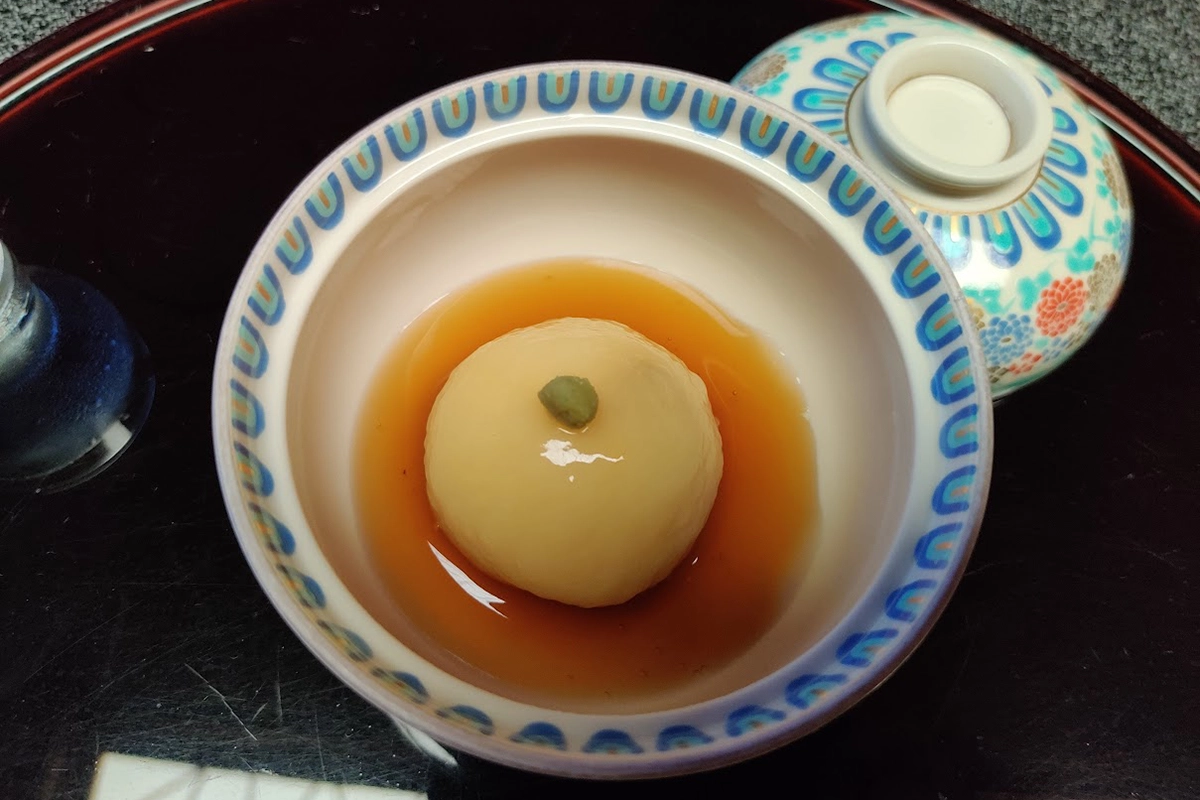Table of contents:
- What is Kaiseki?
- Kaiseki Course
- Experiencing Kaiseki Cuisine
- Our Recommendation of Kaiseki Restaurants
What is Kaiseki?
Kaiseki is a traditional multi-course meal that has been part of Japanese culture for over 500 years. The meals are crafted with seasonal ingredients, attention to detail, and exquisite presentation. In this article, we aim to demystify the Kaiseki dining experience including.
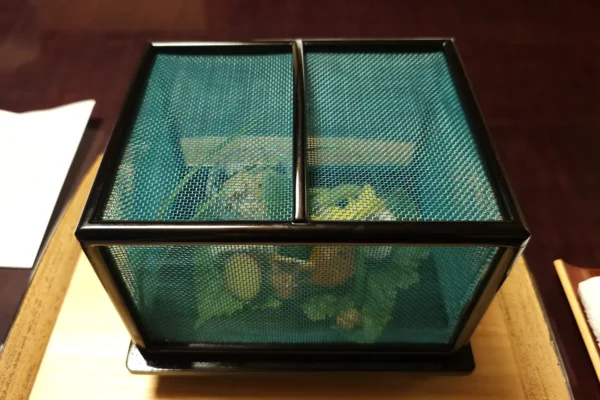
We have been to several Kaiseki restaurants in Japan. When we make our reservation, we inform them of our desired course based on the price range. You should discuss any dietary restrictions then. Each Kaiseki establishment offers its unique ambiance. Some Kaiseki meals were served in the private rooms, while we enjoyed other meals at the counter across from the chefs. Please see the list of Kaiseki restaurants we recommend at the end of the article below.
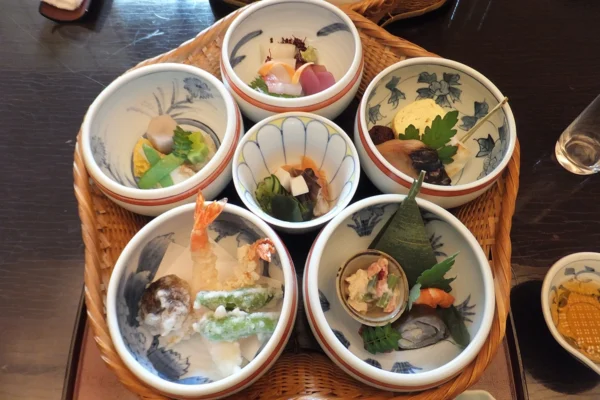
If you are intrigued by Kaiseki but mindful of your budget, we suggest you try the lunch meals, which provide a taste of the kaiseki experience at a more accessible price. Additionally, the bento boxes crafted by renowned Kaiseki chefs, available at select department stores, offer a glimpse into this exquisite cuisine. Don’t miss our “Michelin Star Picnic by the Kamo River” article.
Kaiseki Course
Kaiseki consists of several dishes that are served in a specific order. Each dish is carefully crafted and showcases the best of seasonal ingredients. Check out the Kaiseki book by the Kikunoi’s head chef. You can learn how much preparations go into the Kaiseki meals. I enjoy the beautiful photos of meticulously arranged food.
- Sakizuke: similar to the French amuse bouche, this first course is usually something pickled to whet the diners’ appetite for the courses to follow.
- Hassun: an assortment platter of small seasonal dishes from both sea and mountain. Hassun is a measurement of about 24 cm in the Japanese old way, and this course is usually served on the length of the squire tray.
- Mukōzuke: an assorted sashimi dish
- Takiawase: a simmered dish, typically of vegetables mixed with some meat
- Futamono: a “lidded dish”; typically a soup dish made with a dashi broth base; it is revered as the most important course in a kaiseki sequence—and the mark of a chef’s ability.
- Yakimono: a grilled dish.
- Suzakana – a small dish used to cleanse the palate, usually vinegar-based.
- Shiizakana: a substantial dish, a main dish of the Kaiseki meal.
- Gohan: a rice course, served with miso soup and pickles.
- Mizugashi or Mizumono: a platter of Japanese sweets or fruits.
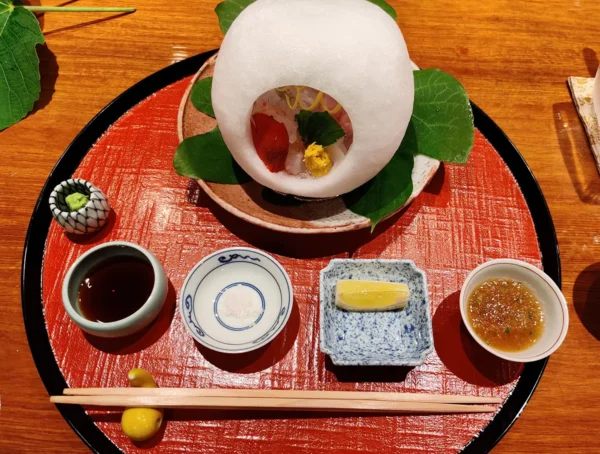
Experiencing Kaiseki Cuisine
The art of Kaiseki lies not only in the culinary creations but in the meticulous presentation. The choice of dishware, the arrangement of ingredients, and the sequence in which dishes are served play important roles in this sophisticated dining experience. Kaiseki delights the senses, offering a feast for both the palate and the eyes.
Furthermore, the Kaiseki experience is not a simple act of dining. It encompasses the ambiance of the setting. You may see a beautiful hanging scroll, the thoughtful placement of seasonal decorations, and the harmony of flower arrangements, which contribute to your holistic dining experience.
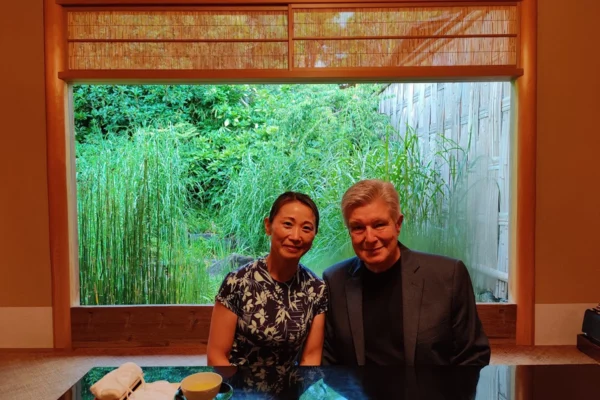
Central to the Kaiseki tradition is the supreme hospitality (omotenashi) extended by the chef and waitstaff. We are always impressed with their dedication to providing an exceptional dining experience.
Tips to visit Kaiseki Restaurants
- Dress nice – show some respect for chefs and staff who are taking time and effort for your special meal.
- Be on time – many of dishes are cooked based on your arrival time. Don’t be late!
- What are you wearing inside the shoes? – you may be taking off your shoes at the entrance.
Our Recommendation of Kaiseki Restaurants
Kikunoi Honten (Kyoto)
Gion Nishimura (Kyoto)
Kamigamp Akiyama (Kyoto)
Uosaburo (Fushimi)
Wa Yamamura (Nara)
Hanakoji Sawada (Sapporo)
Kira (Hakodate)
